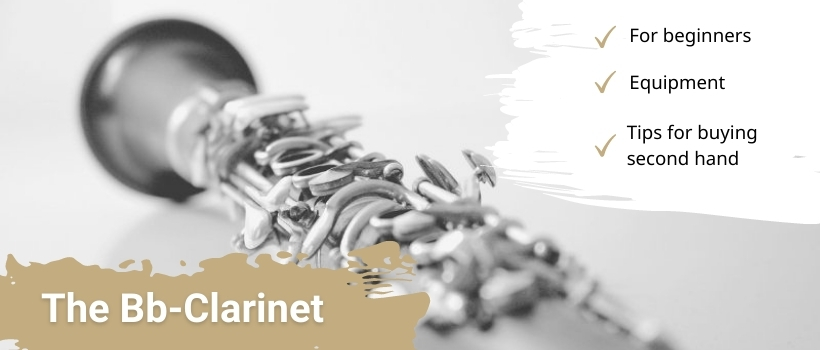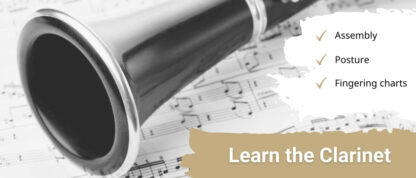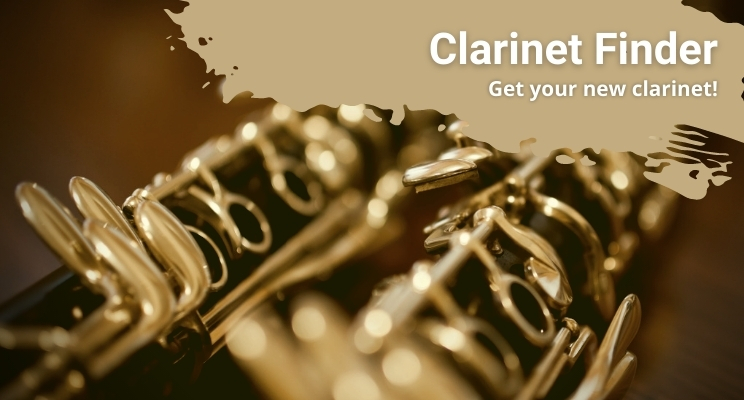The Bb clarinet is the classic beginner’s model. Because of its well-balanced pitch and wide range, it is especially popular in symphony and wind orchestras, but jazz and pop music also like to use the Bb clarinet. As a transposing instrument, the Bb clarinet sounds lower than written. A fingered C therefore sounds like a B flat.
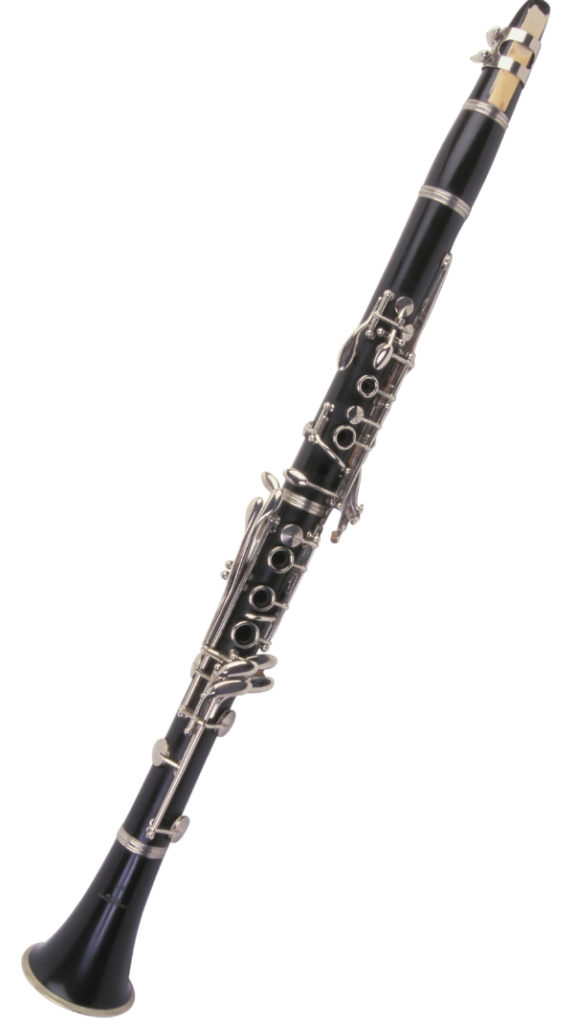
What distinguishes the Bb clarinet?
The Bb clarinet is the ideal model for beginners. Due to its size, it is very easy to handle for beginners and children: It is between 60 and 70 centimetres long and weighs around 700 grams. In terms of sound, the Bb clarinet has the largest range of all clarinets at 4 octaves and is therefore often used in wind or symphony orchestras. As with all clarinets, the Bb clarinet has both German and Boehm fingering. The fingering also affects the sound of the clarinet.
For whom is the Bb clarinet suitable?
The Bb clarinet is a popular model for beginners who want to learn the clarinet, because it is comparatively easy to handle. But it is also a good choice for advanced players and professionals. Since it has a very wide range of 4 octaves, it can be used very flexibly and can underscore any situation with its sound.
What does a Bb clarinet sound like?
The clarinet is a transposing instrument, which means that the notated or played note does not correspond to the sounding note. As the name suggests, the Bb clarinet is tuned in Bb. A C played is therefore sounded as a B flat. This makes the Bb clarinet sound rather low overall. Its sound is described as full and warm. If you prefer an even deeper sound, you can find out more about the bass clarinet.
In this video you can get an exact picture of the sound of the Bb clarinet:
Which equipment is available for the Bb clarinet?
If you want to take good care of your clarinet and test its tonal limits, you can do so with a variety of things.
The mouthpiece
The choice of mouthpiece can make a big difference in the sound of the clarinet. First of all, the mouthpiece must be adapted to the respective type of construction (German or Boehm). Nowadays there are also hybrid pieces that function according to both the German and Boehm designs.
The length and opening of the slide have a strong effect on the sound of the clarinet and also correspond differently with each individual player. The material can also change the sound: You can choose between mouthpieces made of rubber or ebonite, crystal glass or wooden mouthpieces made of grenadilla or ebony. The best way to find the right mouthpiece for you is to try it out and get to know which sound you prefer. Many players have several mouthpieces to suit different sound worlds.
In addition, the mouthpieces differ in the type of reed attachment. It is possible to attach the reed with a reed screw or with a cord. The reed cord is the traditional variant, but requires some practice and time. If it has to be done quickly, on the other hand, the reed screw is suitable; it simply has to be tightened over the reed.
The Reed
The reed also has a great influence on the sound of your Bb clarinet. The reeds are made of wood – which is also the reason why the clarinet belongs to the woodwinds. The reeds differ in their thickness. The following applies: the stronger the reed, the more difficult the intonation, the softer the reed, the easier the embouchure. In terms of sound, light reeds are particularly suitable for soft, gentle notes. Stronger reeds are particularly suitable for loud, expressive notes. The reeds must also be adapted to the mouthpiece. Rule of thumb here: The larger the opening, the softer the reed should be.
The Barrel Joint
The barrel joint, i.e. the connecting piece between the mouthpiece and the body, can also influence the sound. Here, too, the first thing that matters is compatibility with the German or Boehm construction. In addition, length, bore, shape and material have an effect on the tonal characteristics. Here, too, the only way to find the ideal pear for your own style is to try it out.
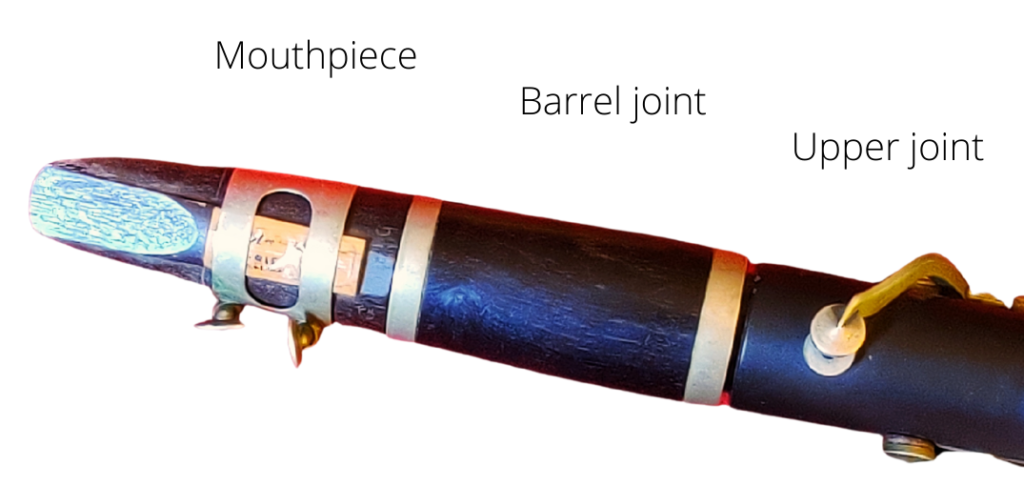
However, depending on the type of barrel joint, there are also different problems. For example, pears made of mixed wood species are beautiful to look at, but have a higher risk of cracking due to the different expansion rates of the wood species. You should therefore also seek advice on this before buying.
Cleaning
You should clean your clarinet regularly to enjoy it for a long time – preferably after each playing session. This prevents condensation from the air you breathe from collecting in the clarinet and causing damage. It is best to wipe the inside of the clarinet dry after each playing session. The reed should also be dried and stored separately to ensure the longest possible life. If necessary, oil the mechanism with the appropriate oil. The pegs, i.e. the corks on the connecting pieces, should be greased regularly to ensure smooth assembly and disassembly.
Often all the necessary parts for cleaning are sold in a set. In it you will find:
- a swipe wiper
- a mouthpiece brush
- a polishing cloth
- Clay Hole Cleaner
- Cork grease
Which manufacturers are there for Bb clarinets?
There are many manufacturers of Bb clarinets. Most of them produce clarinets with German fingering as well as Boehm clarinets. Therefore, before buying a clarinet, you should first decide on one of the two types. If you are just at the beginning of your clarinet career and have decided on the B-flat clarinet as a beginner’s model, you can look around at Startone, for example. This is a private brand of the Thomann company. In particular, they produce inexpensive models for beginners. But Thomann itself or well-known manufacturers such as Yamaha or Buffet Crampon also make good instruments. If you are already an advanced player and are now looking for a professional model, you can turn to Selmer or Oscar Adler, for example.
Perfect entry-level model
This clarinet is built according to the international Boehm fingering. The body is made of plastic, the mechanism of highly polished silver-plated nickel silver. Included are a mouthpiece with a reed screw, a pull-through wiper, grease and a case for safe storage.
Investment for advanced students
The Bb clarinet with Boehm fingering is a good investment for advanced players or those who want to become one. Leather padding and an adjustable thumb rest ensure pleasant playing comfort. The Urban Play mouthpiece makes it easier to get started and ensures a pleasant playing feel with good results.
For professionals
Those who are already familiar with clarinets and have fallen in love with the sound of the B-flat clarinet might choose this clarinet by Oscar Adler & Co. It is made of selected grenadilla wood and silver-plated mechanism. Here, too, the adjustable thumb rest provides increased comfort.
FAQ: The Bb-Clarinet
The Bb clarinet is very suitable as a beginner’s model. Inexpensive models from Startone are already available from about 150£*.
The Bb clarinet is a transposing instrument, the C played therefore sounds as Bb. The Bb clarinet therefore sounds somewhat lower. Overall, the sound can be described as full and warm.
The number of keys depends on the fingering. German-style clarinets have 18 – 22 keys and an additional 4 – 6 rings. According to Boehm’s construction, the clarinet has 17 keys supplemented by 6 rings.





